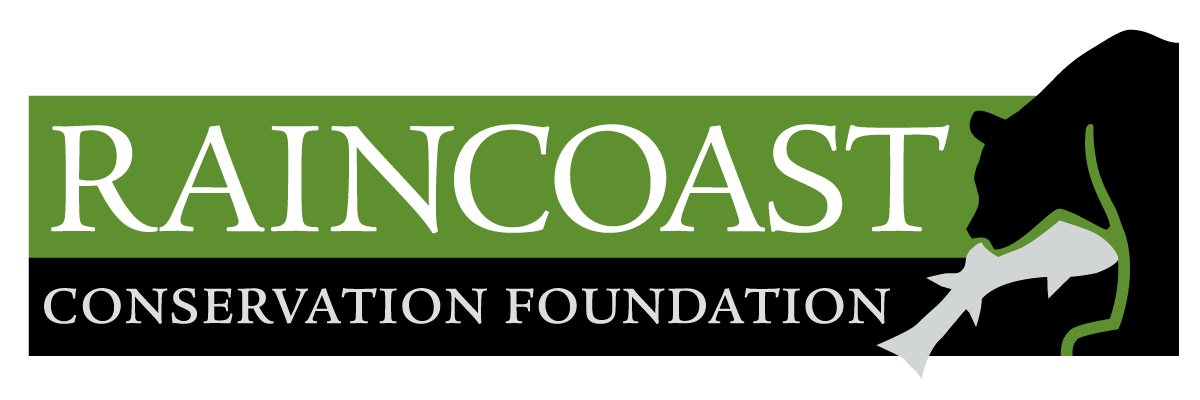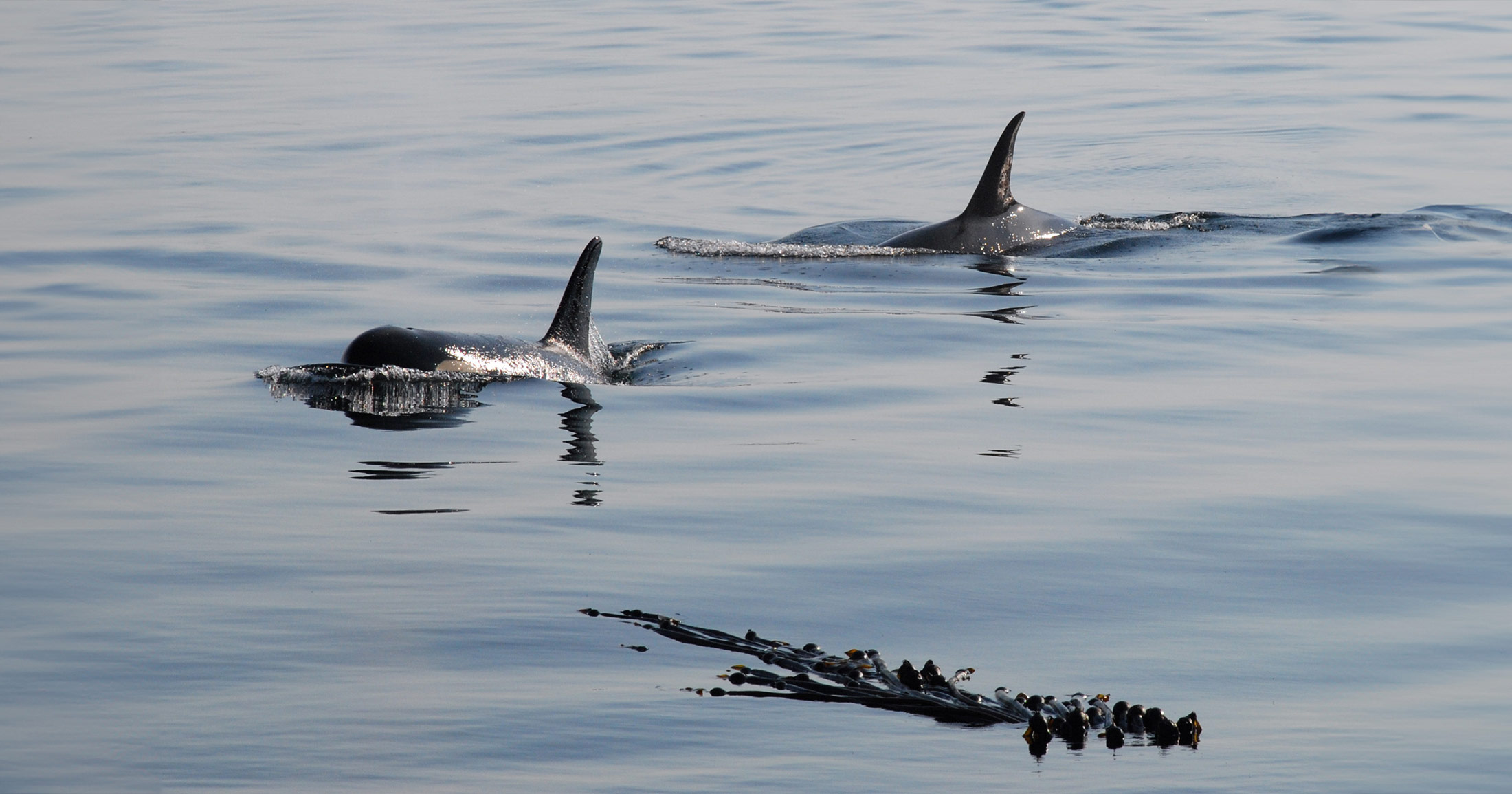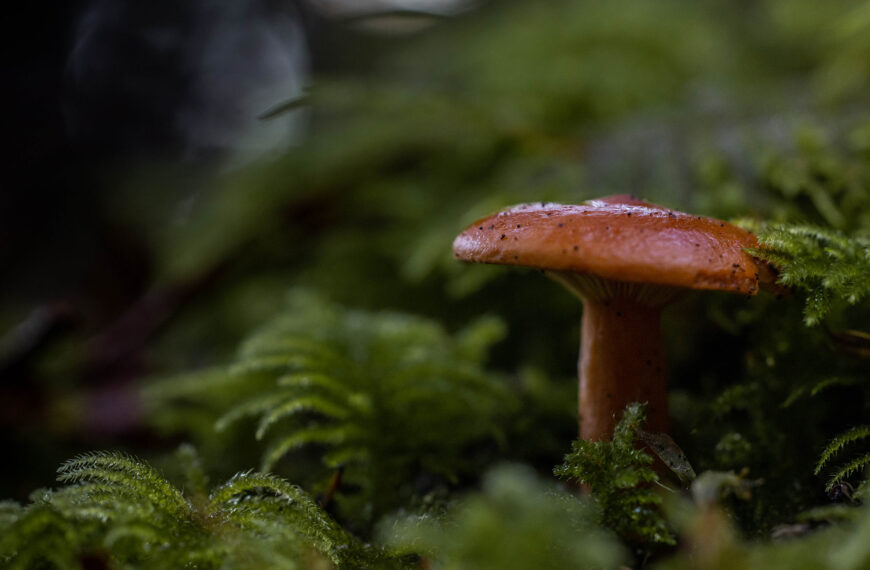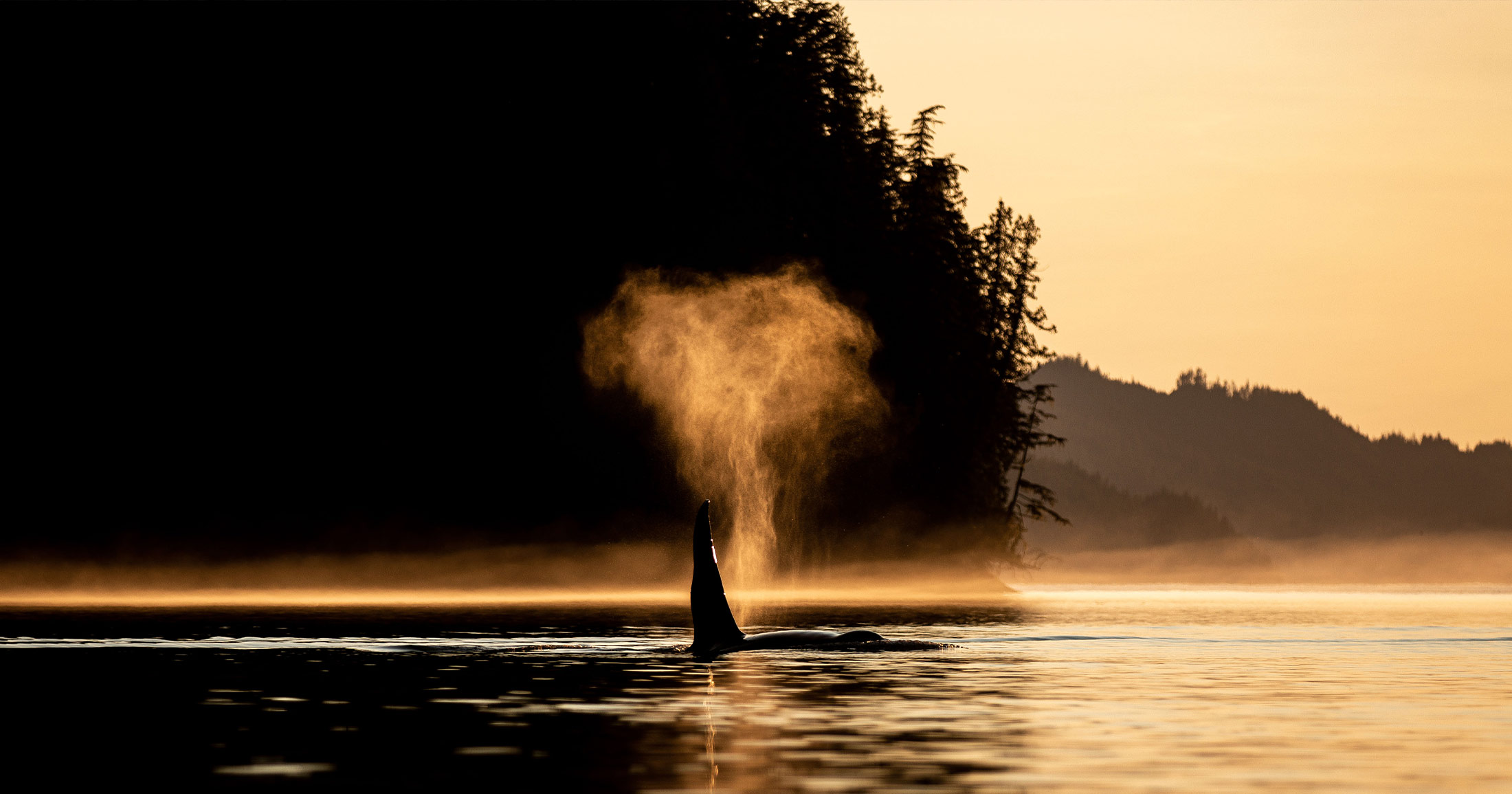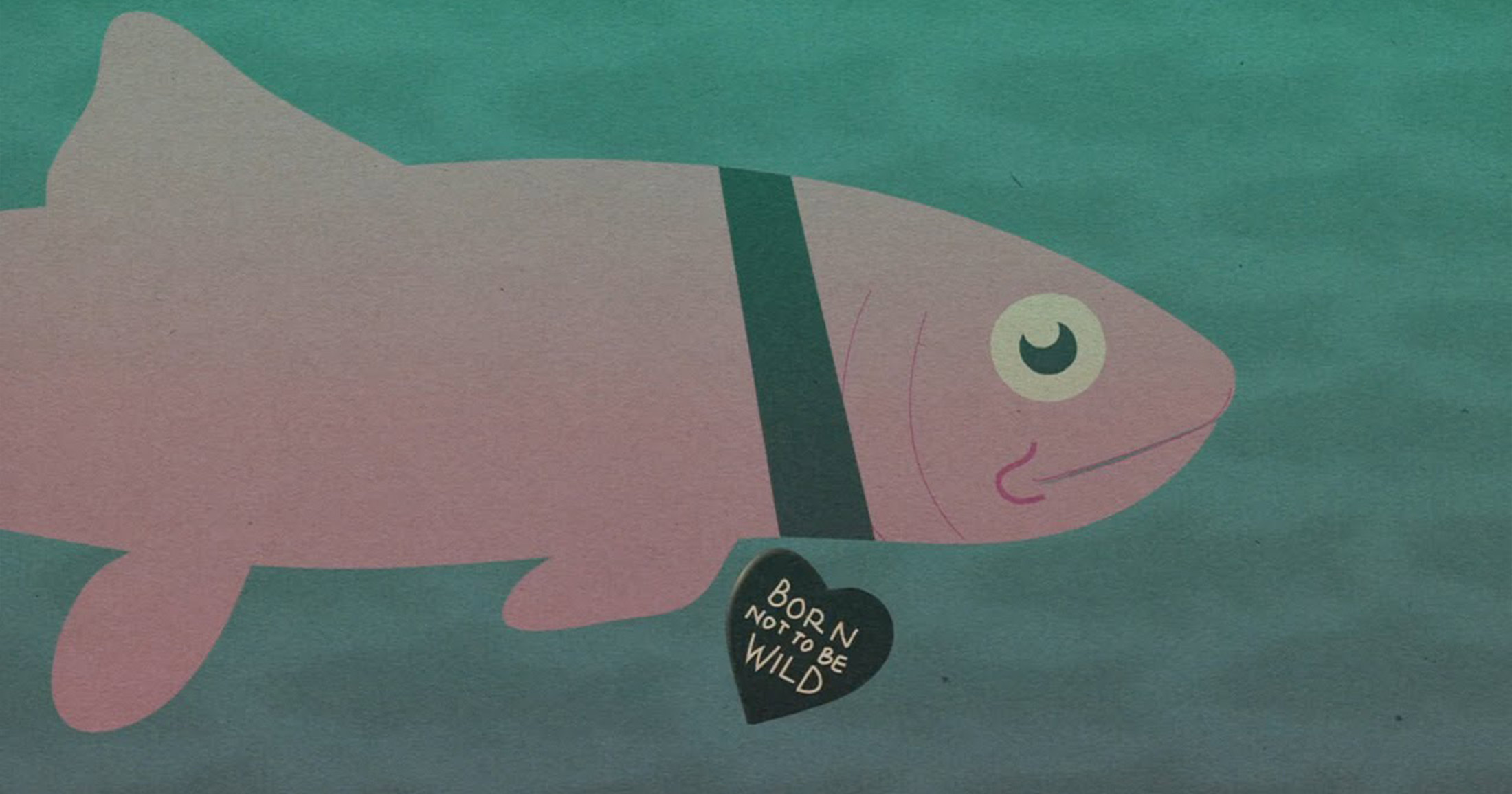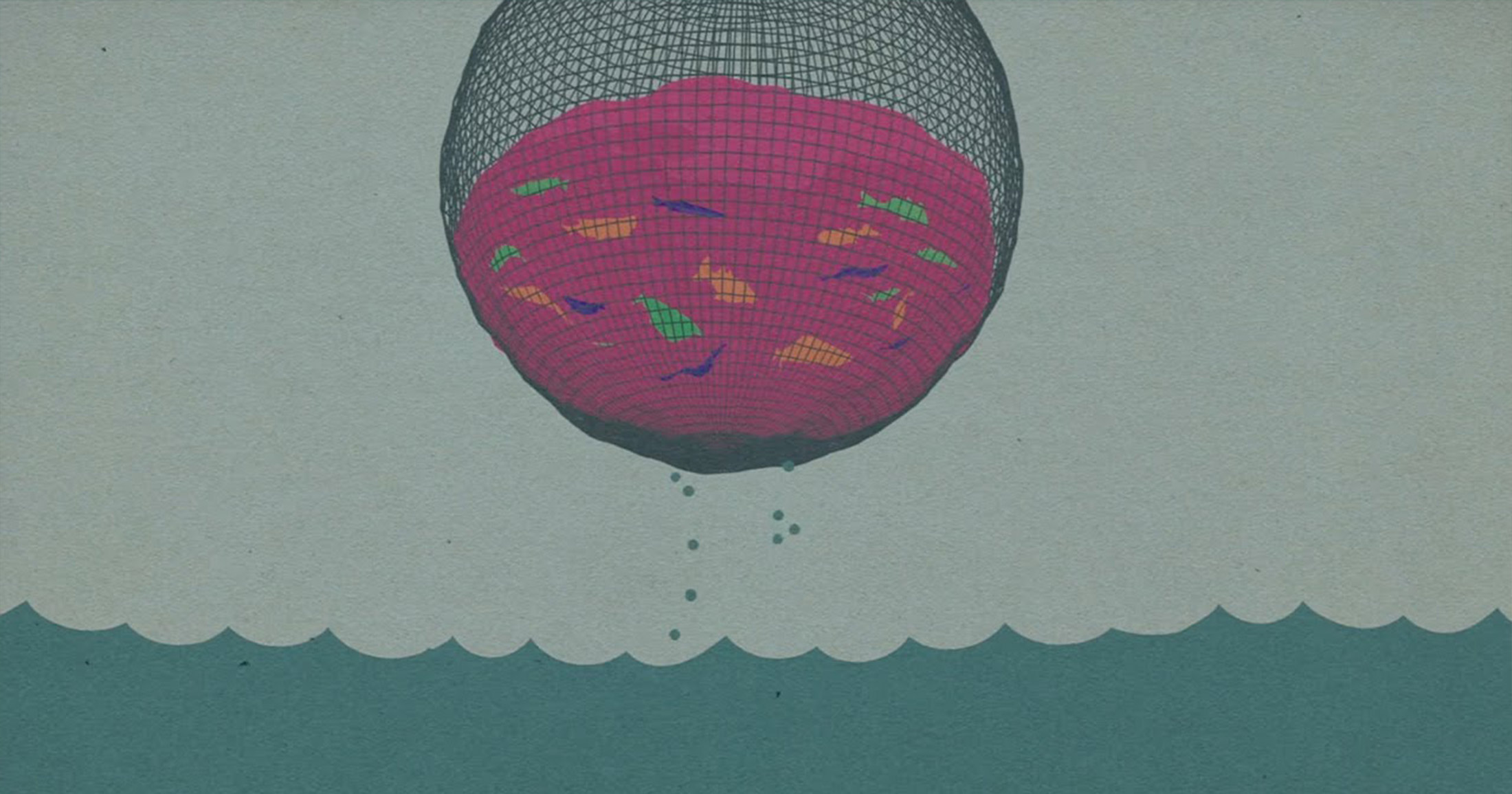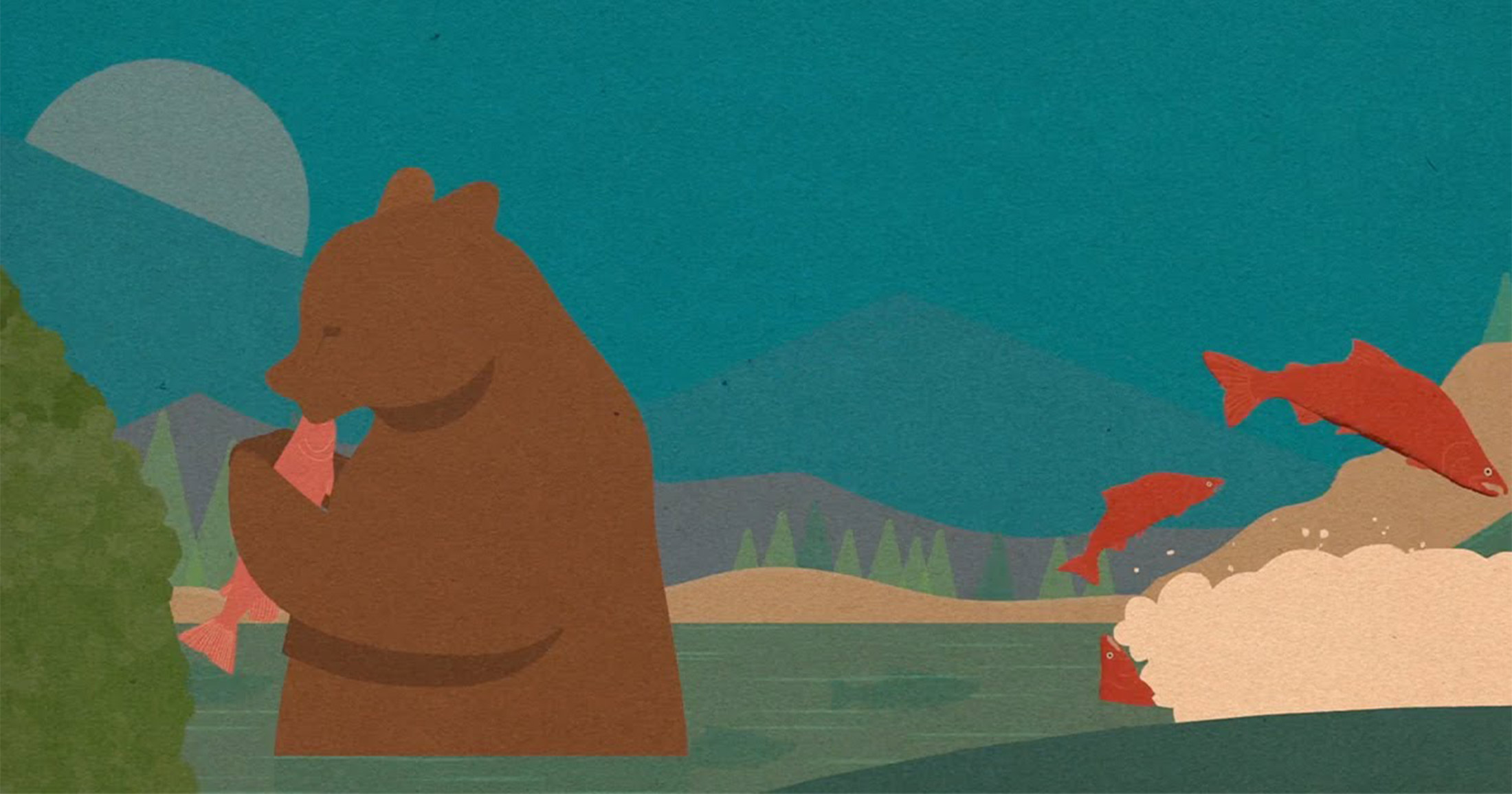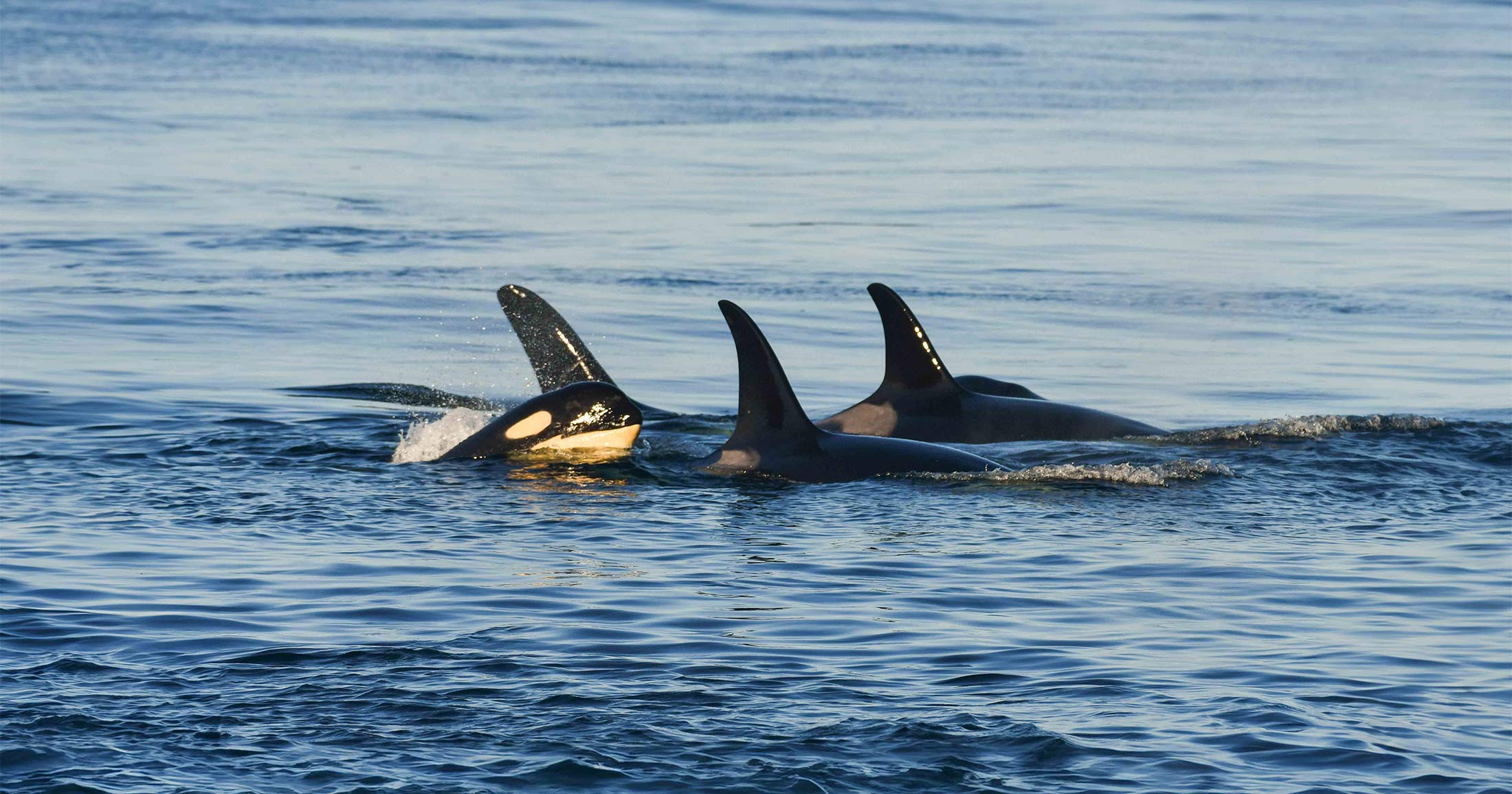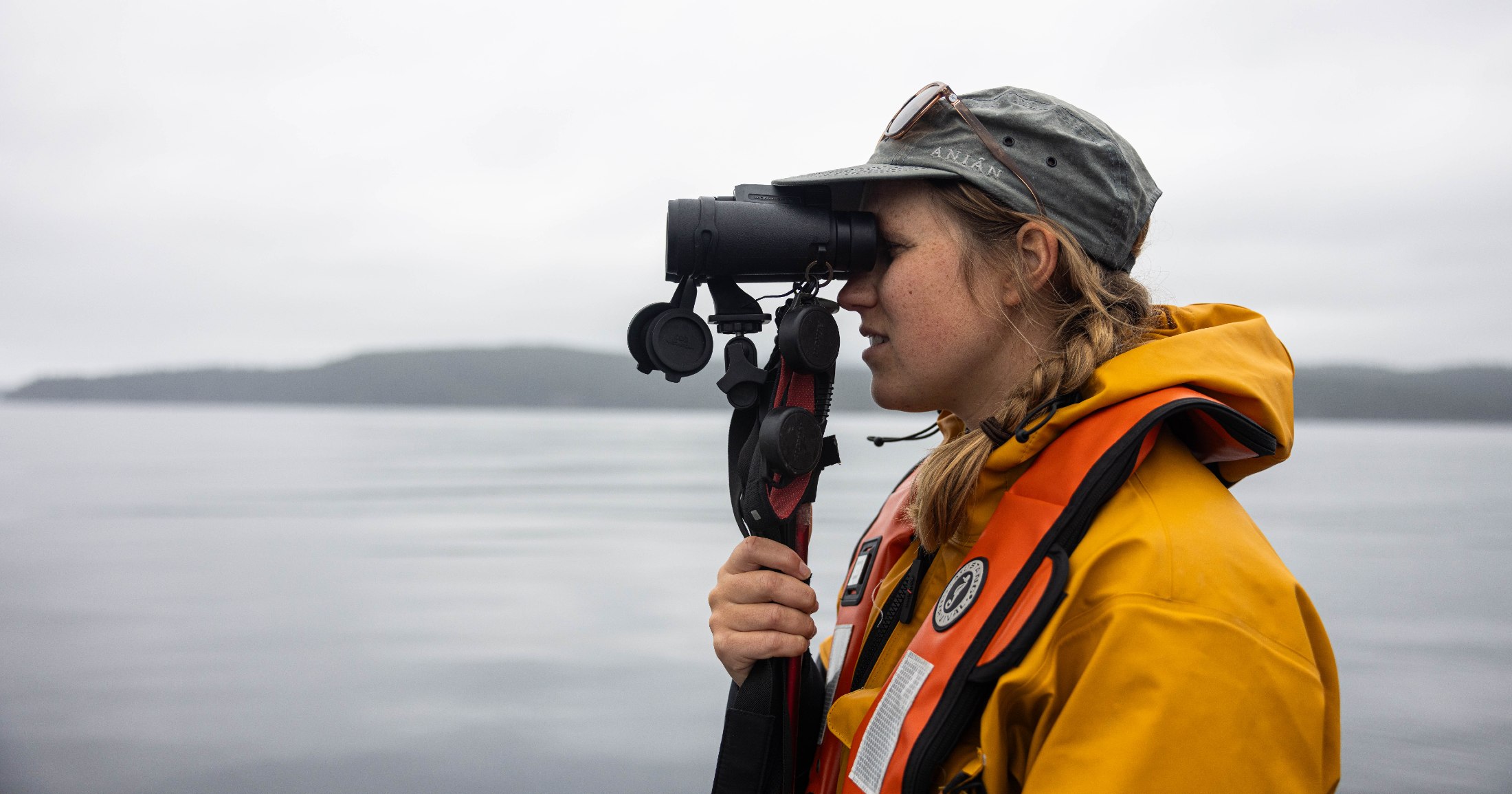The wonders of a Fraser River tributary
Delving into the realms of endangered Chinook salmon surveys and the ongoing resurgence of a wolf population.
Two team members from our Lower Fraser Salmon Conservation and Wolf Conservation Programs offer a glimpse into their experiences while working on a collaborative project.
Auston Chhor
Auston is Raincoast’s Salmon Habitat Biologist, working with our Lower Fraser Salmon Conservation Program.
In early June of 2023, I found myself standing at a tributary of the Lower Fraser, waiting for a boat to come pick our crew up. Ospreys were circling high overhead, their clear, chirping and whistling calls punctuating the otherwise quiet morning. As I hauled our gear down the dock, I found myself struggling to contain the wide grin spreading across my face as a wave of realization slowly hit me: back in the field at last.
Over the course of the summer I would make five more trips to the watershed. Our fieldwork was diverse, dynamic, and full of surprises. One week we would survey a seemingly empty stream, only to return the following week to find it chock full of spawning salmon. Chinook (Oncorhynchus tshawytscha) that return to this watershed are exceptionally large;often, the easiest way to spot them is by looking for their dorsal fins sticking out of the water like some kind of freshwater shark.
Every week for three months, we surveyed streams throughout the watershed for spawning Chinook and sockeye salmon (O. nerka). We also surveyed juvenile coho salmon (O. kisutch), trying to piece together a comprehensive picture of the wild salmon population in the area.
From sea to land
One week in late summer we had the privilege of witnessing the peak of the Chinook migration. We’d arrived in the middle of a heatwave, and the cold, electric blue waters of the creek we were surveying were a welcome sight. We began our survey at the confluence of the creek and the main river, walking upstream and counting spawners along the way. Occasionally, we would break into the riparian zone, following game trails and the scent of decomposing fish in hopes of finding a salmon carcass to sample for age structures and genetics.
Once the unmistakable scent of rotting fish was detected, we’d spend some time rustling around in the bush, checking beneath logjams and in the crooks of cedar stumps for our prize. Sometimes, we’d stumble upon a partially consumed carcass and quickly take our samples of fin and scale before hurrying away, not wanting to disturb the animal who may not have finished its meal.
Other times we’d find carcasses intact, so fresh that they had little to no smell, their eyes still sparkling with the last glimmers of life. Finding a salmon carcass was always an exciting time to stop, take in our beautiful surroundings, and marvel at the interplay of life and death happening all around us.


Managing salmon for wildlife
We surveyed through to the end of the Chinook migration, watching as the adults slowly disappeared from the streams, leaving behind their bodies for the forest, which will in turn nurture their offspring come spring. Our work in the area is part of a larger effort by local First Nations to restore ecosystem-based salmon management to the Lower Fraser River.
Understanding how many salmon are needed to sustain healthy wildlife and forests can inform management decisions that aren’t solely based on human needs. Colonial ways of valuing fish, forests, and water have contributed greatly to the decline of Fraser River wild salmon, and returning to worldviews that value the inherent, unquantifiable worth of wild salmon is one step we can take to restore them back onto the landscape.

Chavon Robertshaw
Chavon is Raincoast’s Conservation Science Technician, working with our Lower Fraser Salmon Conservation and Wolf Conservation Programs.
After a week of hard work, it’s the boat ride leaving the project site that leaves me feeling fulfilled and in awe. As I look back at the mountain ranges and the turquoise water surrounding the boat, I feel thankful for the role I have and being able to work on these lands.

Throughout the summer and into fall our crews conduct surveys on adult and juvenile salmon populations within this tributary, while also focusing on large mammal activity using wildlife camera traps. Since the deployment of our first camera in the summer of 2022, we have been expanding our study in this area by installing additional cameras all throughout the watershed. Doing so allows us to passively monitor the presence of large mammals, such as grey wolves (Canis lupus), bears, cougars (Puma concolor), and Roosevelt elk (Cervus canadensis roosevelti). As we make our way through different Forest Service roads and streams in the watershed we take note of areas that would be great to place a new camera.
Amidst one of our spawning adult Chinook surveys we notice a perfect area where a fallen log crosses the creek, a picturesque location and ideal for observing predators. We set up a camera here and the following week the crew gathers around to check the footage. Excited celebrations can be heard as we scroll through numerous videos of the resident grizzly bear (Ursus arctos horribilis) hunting for these massive Chinook spawners.
This camera also captures a great number of black bears (U. americanus) crossing the log as they dedicate their time to filling their bellies with salmon in preparation for winter. With over 30 cameras deployed, we have observed remarkable fishing activity–from bald eagles (Haliaeetus leucocephalus) using their sharp talons to pluck salmon straight from the stream to wolves plunging their muzzles into the water to capture a fish with their teeth–and various scavengers coming to feast on the leftovers. Evidently, it is a lively and fundamental time in the environment when the salmon return and carry out their role as a foundational species.


Methods and mindfulness
During each camera check we collect the SD cards, replace batteries as necessary, and copy images onto external hard drives. Further analysis then begins with sorting through thousands of images using a program called Timelapse Image Analyser, which is where a portion of my work comes in. With this program I am able to label animal footage based on species, group size, and the possibility of individual identification.
Hundreds of images may be empty due to the camera being triggered by sunlight, snow fall, or plants blowing in the wind, but the footage of wildlife is always remarkable and rewarding when I finally come across it. Being able to witness these animals in their natural state is one of a kind and feels next to impossible without the use of the cameras. I never thought I would get the chance to see the teeth inside a black bear’s mouth as they decide to chomp down on our camera, or witness a young bull elk practicing his sparring all alone, rutting back and forth across the camera view. Nor did I think I would get to watch and hear a mother cougar stop in her tracks, center frame, and glance back at her spotted kitten to communicate with a low growl. After reviewing our photos and videos, I feel a sense of closeness to the animals here. As we travel through the wildlife trails in the forest to reach our cameras, I remind myself how grateful I am to share this space with these spectacular creatures.
Our data’s contribution
One of Raincoast’s goals is to monitor the recovery and recolonization of the wolf population in this area, which includes identifying individual wolves using high-quality images and videos captured on the cameras. As a result of such efforts, we hope to instill a more personal connection between wolves and humans to improve wolf conservation within this watershed and in British Columbia as a whole. Ultimately, the data collected during this project will be reported back to the local First Nation who we are collaborating with and whose territory we are working on. The information will then be used to inform future projects that the Nation is implementing.
A wolf’s importance
Earlier this year we witnessed the beauty of both breeding and pupping season for this wolf pack, from seeing the breeding female with a round pregnant belly to a few months later watching new and curious pups prance closely behind her. Each individual wolf contributes to the success and survival of the pack. For example, the breeding female appears to be the oldest and therefore, likely the most experienced within the family group. She will be passing down intergenerational knowledge to these young ones, teaching them how to navigate throughout the valley and hunt for different types of prey, such as elk, salmon, or beaver.
Wolves play a vital role in their ecosystems, with their presence having effects on predator-prey relationships, as well as the natural landscape. Carcasses left over from wolf hunts provide an important food source for a number of scavengers, especially during winter seasons. Their predation, or lack of, on certain ungulate species can also have long term effects on vegetation communities. Several scientific studies have taken place in national parks such as Yellowstone National Park, Jasper National Park, and Banff National Park to look at how wolf predation on elk populations can impact riparian vegetation. Without larger predators like wolves to manage ungulate populations, overbrowsing of riparian vegetation can occur and negatively affect aquatic ecosystems by causing bank erosion, stream widening and the loss of overhead cover. It is apparent that through trophic cascades, wolves provide stability to an ever changing environment.
Our efforts will continue to focus on wolf conservation and raising awareness that maintaining wolf populations is essential to the balance of healthy ecosystems.
Support our mobile lab, Tracker!
Our new mobile lab will enable the Healthy Waters Program to deliver capacity, learning, and training to watershed-based communities. We need your support to convert the vehicle and equip it with lab instrumentation. This will allow us to deliver insight into pollutants of concern in local watersheds, and contribute to solution-oriented practices that protect and restore fish habitat.

